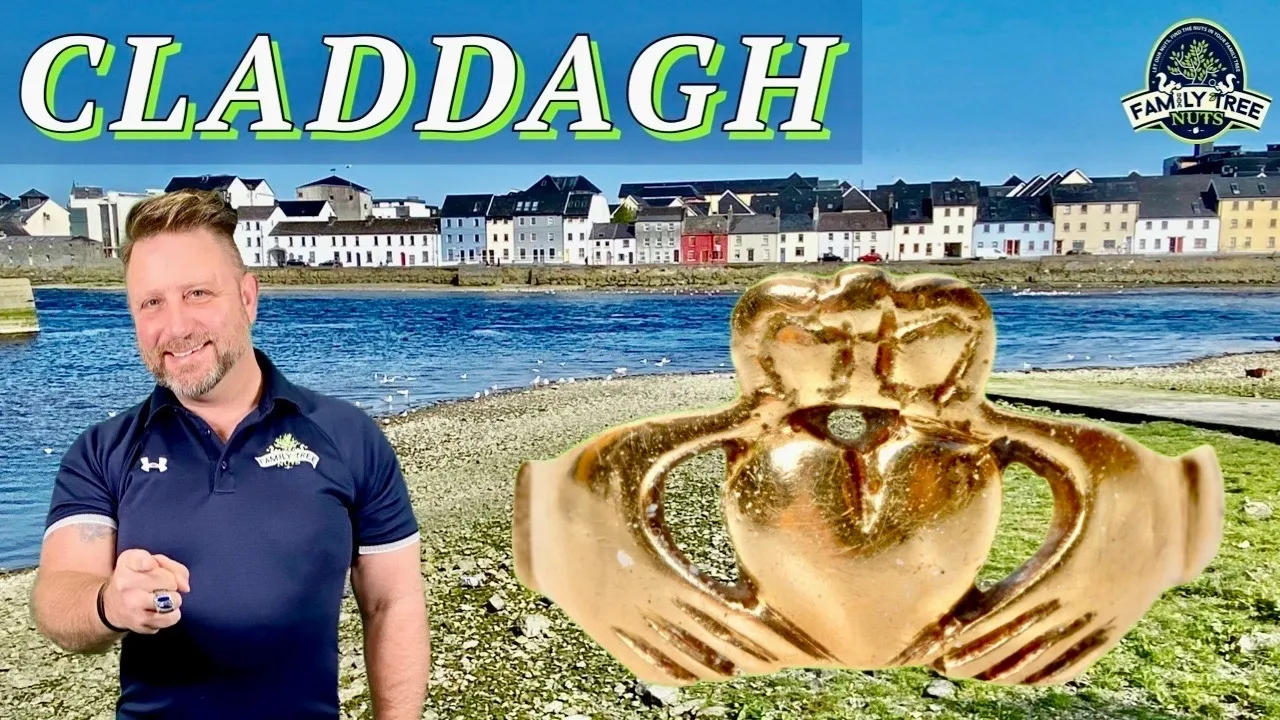
CLADDAGH RING & VILLAGE LEGENDS & HISTORY
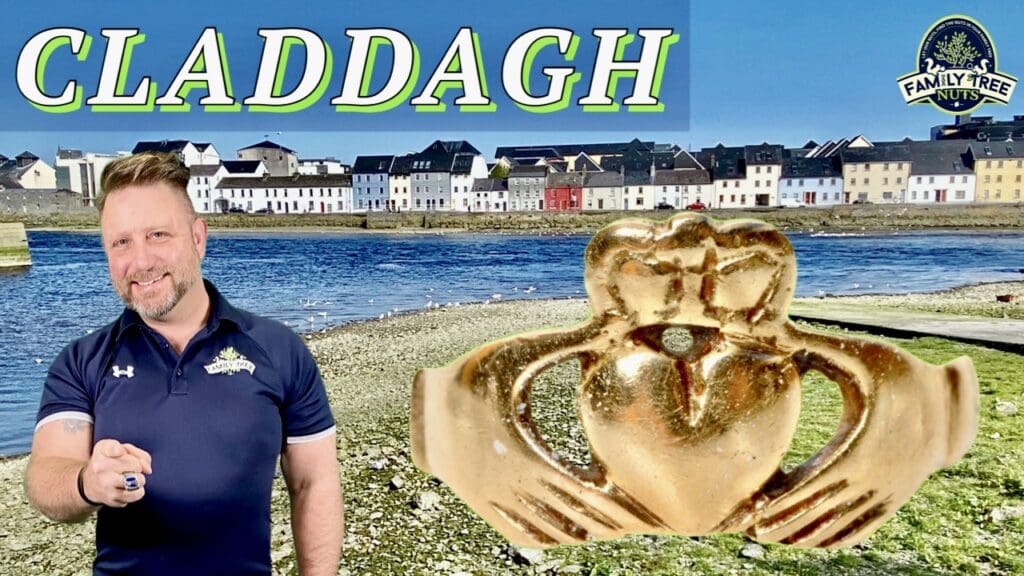
Love, Loyalty and Friendship. Those three powerful words make up the meaning of the ring worn throughout five different centuries, by millions of Irish, and those of us with Celtic ancestry. Even if you haven’t had one yourself, chances are you have seen someone wearing one, or at least seen the image somewhere. It has become a fashionable way to celebrate one’s heritage and pride of their Celtic roots. It is surprising that even with the ring’s popularity, very few know the origin of the ring and where it came from. In this video we will tell you the history, the legends, and the love story of the ring. We will also take you to the small fishing village where it all began. The Claddagh Ring, a symbol of Irish love and pride.
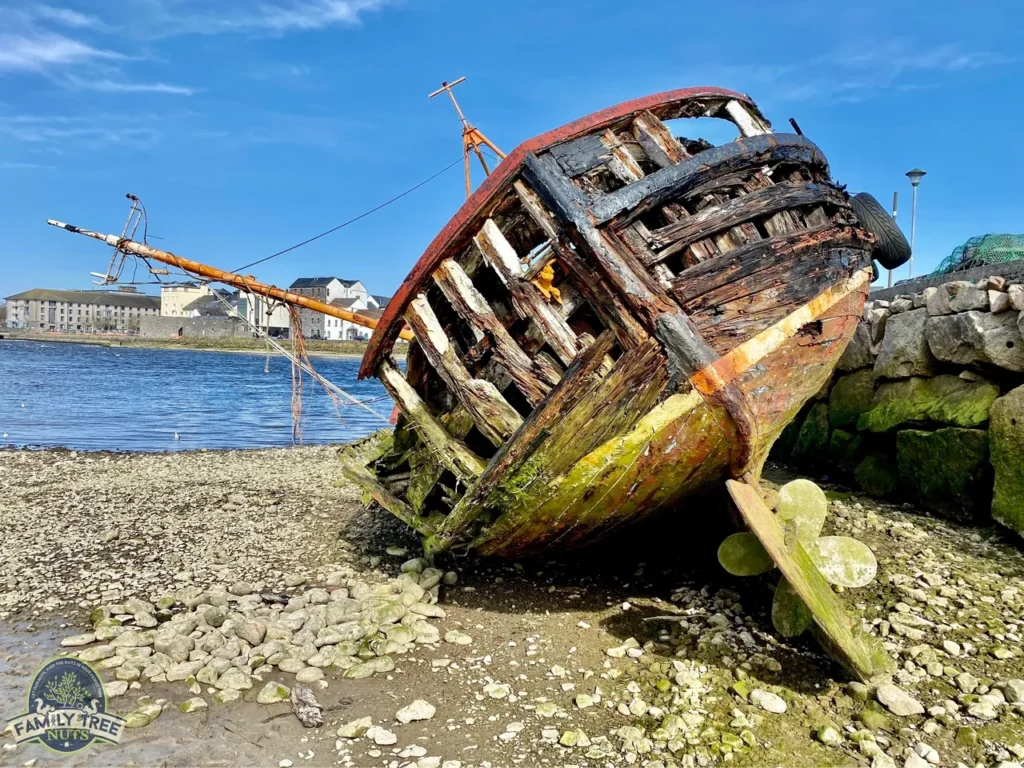
Recently we visited the exact location of the small fishing village of Claddagh, which today is inside the city of Galway, Ireland. We were thrilled to walk the exact shore that the historic rings were first made and we wanted to share that experience with you. Here at Family Tree Nuts, we make videos at historic locations, all over the United States, and a few countries. This article is one of several that we have from Ireland, so be sure to check out our others. Also, we’d love to know your personal stories about a Claddagh ring. When did you first get one, or is it on your list? Be sure to comment your thoughts below. Now let’s get back to the story of this beautiful ring.
As I mentioned, Claddagh is a small fishing village in Galway, Ireland and I’m going to tell you the towns story but first I wanted to discuss the ring itself. What exactly is a Claddagh ring? The ring is comprised of three things that symbolize something important to a successful relationship. The first is the heart which symbolizes love, the second is the crown which represents loyalty, and the third is the hands which stand for friendship. These three virtues are crucial to any successful relationship. Also, it’s important to understand how to wear the Claddagh ring. When worn on the right hand, with the crown inward, it means the wearer is single. If the ring is on the right hand with the crown outward, it means they are in a relationship. If the ring is on the left hand, with the crown inward, it means they are engaged to be married, and finally if worn on the left hand, with the crown outward, it means they are married.
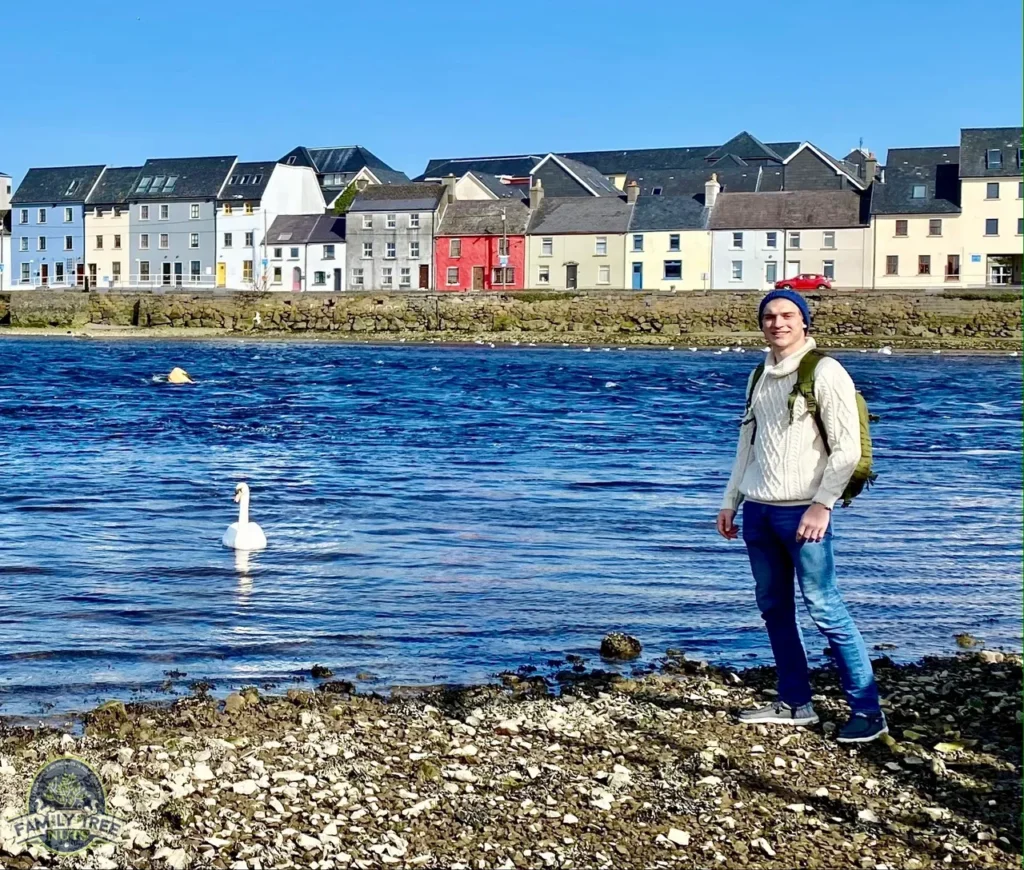
If worn as a wedding ring, the Claddagh ring design symbolizes the wedding vow “With my hands, I give you my heart, and crown it with my love.” It is common for mothers to gift their daughters with a Claddagh and for them to be passed down for generations and become precious family heirlooms.
There are a few legends as to how the ring came about. The most popular version is the story of Richard Joyce who was a man who lived in Claddagh. Around the year 1675, Joyce was deeply in love with his sweet heart and engaged to be married to her as soon as he returned from a business trip to the West Indies. Unfortunately, on his journey his ship was attacked by North African Arab pirates and he was taken prisoner. Soon the pirates sold Joyce into slavery but as fate would have it, he was somewhat lucky and was purchased by an Arab goldsmith who taught him the trade of jewelry making.
Richard Joyce was a slave, but it is said that his life wasn’t all that bad. He could come and go about as he pleased, he worked inside making jewelry instead of a manual labor job like many slaves suffered with. They say he even developed a deep friendship with his master and was treated like a member of the family. Even with the comforts of his position, Joyce could not get his sweetheart out of his mind who was back home in Claddagh. He longed for her and remained true to her in his heart. His love for her inspired him to create a symbol of his love and he used his new skill of jewelry making to fashion the first version of the ring that would eventually become world famous.
Fourteen years passed and eventually the British King William III worked out a deal with the King of Algeria the included the release of all The Crown’s subjects, including Richard Joyce. Joyce was now free to return home and claim his beloved bride, but his master did everything he could to keep him there with him. Joyce had become quite skilled in the jewelry craft and his skill brought his master great wealth. The two had also become good friends and it filled the master’s heart with sorrow to think of losing his companion. The master offered Joyce a 50/50 partnership in the business if he would stay. Joyce considered this for a time but his love for his sweetheart was too strong. Upon Joyce’s refusal of the proposal, his master offered his own beautiful daughters’ hand in marriage if Joyce would stay. Joyce knew that this marriage would set him up for life and that he would never want for much of anything in life again. After respectfully considering the offer of the master, Richard Joyce again declined and began his journey home.
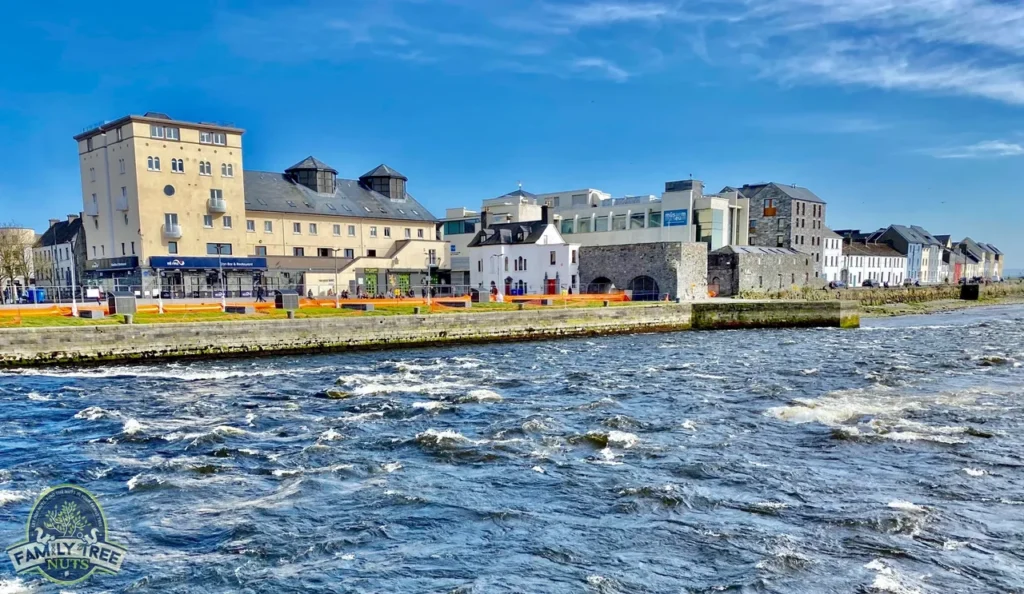
During the journey Joyce was worried to pieces about his sweetheart. It had been fourteen years and he knew that it was highly likely that she had married another in his absence. Joyce was driven by his love for her, and knew that he just had return home, and hope for the best. Upon arrival to his home of Claddagh he found that his sweetheart had never given up hope that he would return and she had never married. They didn’t delay and were married immediately with the ring that Joyce had fashioned for her. The story of the couples love and quality of the ring that Joyce had fashioned for her, put it in high demand all around Western Ireland. Joyce set up shop and produced this ring over and over again for lovers in the area.
One other popular legend of the origin of the Claddagh ring involves a generous widow of Connacht. Her husband left her a fortune and she used the money to build bridges around the area. It is said that because of her kindness, one day an eagle swooped by and dropped the first Claddagh ring in her lap. No matter which story you believe, there is little doubt that ring became extremely popular and a symbol of the region. By the 1800s the ring had spread all over Ireland, and soon the world, to those who were proud of their Irish heritage. They come in all sorts of versions, metals and jewels. Some are etched, some are carved out, and even some today are on popular silicone rings, like the one that I am wearing.
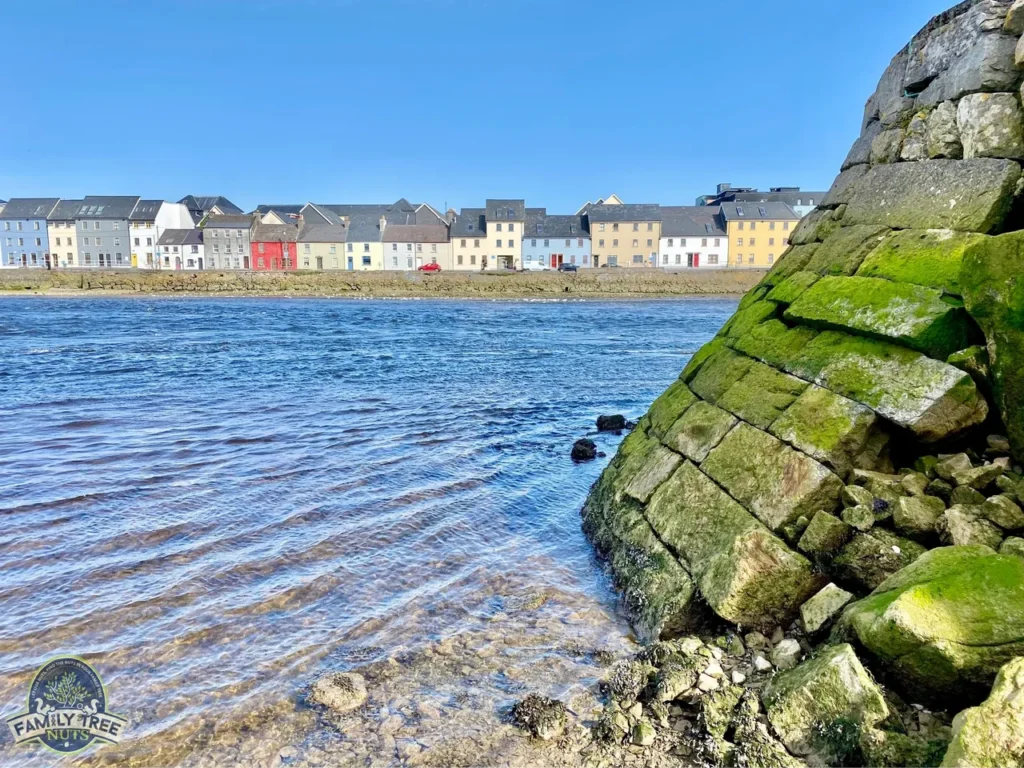
So now that we have covered the history and traditions of the Claddagh ring itself, it’s time to discuss the history of the village of its origin. Today The Claddagh is part of the city of Galway and it’s hard to imagine it in the time of Richard Joyce. The small fishing village was outside of the city’s walls, just on the opposite side of the mouth of the River Corrib, where it flows into Galway Bay. In the Irish language Claddagh means, “stony beach”, or “foreshore”, which is the land between the water and developed land. It was a grouping of houses where the fishermen lived. Their wives sold their wares at the fish market at the Spanish Arch, which was a gate in the medieval walls of Galway, and one of the last remaining sections that still stands today.
Many of the folks from Claddagh and Galway are believed to be descended from the Black Irish, or Spanish settlers that were part of the Spanish Armada that were shipwrecked along the coast of Ireland in 1588. The people living in Claddagh were said to be a rough and hearty bunch that lived simple lives without a lot of life’s pleasures. Their simple hamlets had thatched roofs and were situated without order in the village. This type of living was quite common for most country folk in Ireland and one of the main reasons that them, along with their cousins, the Scots-Irish, were so well suited for living in the American frontier of Appalachia. Living in a log cabin with few luxuries was already a way of life for them before they emigrated.
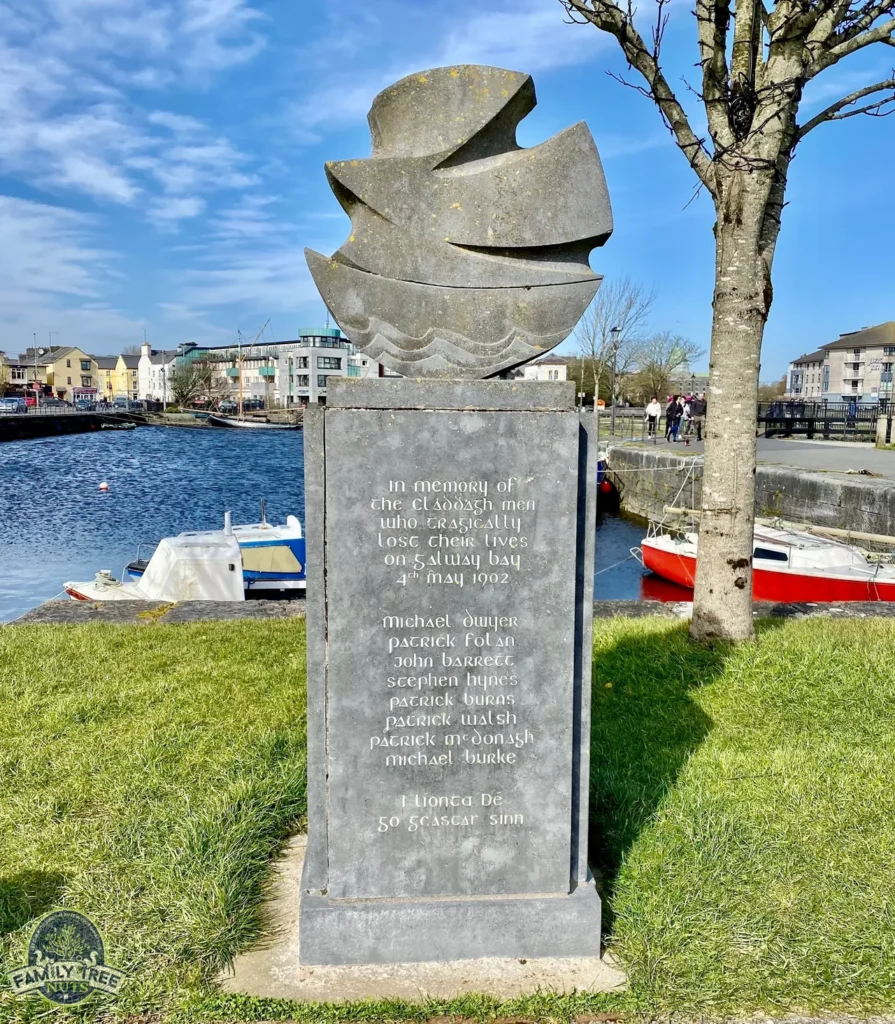
The village of Claddagh was an exclusively Irish speaking community until the mid 1900s and today it is still widely spoken, or in many cases understood. In 1927, Claddagh was declared unhealthy, due to overcrowded conditions and lack of sanitary accommodation of water supply. The historic thatched roofs homes were demolished and replaced by rows of neat two-storied houses. Today the area is a park and a housing neighborhood. The docks are busy for various types of boats. At low tide you can walk out and stand on the stony beach that gives Claddagh its name. It has amazing views of the city of Galway and if you are quiet and use your imagination, your mind can take you back in time to how the area looked when the famous ring was first being fashioned. If you ever get to visit, be sure you have some time to really take in the sights that are all around you so that these memories will bring a smile to your face whenever you glance at your own Claddagh ring.
Just inside the Spanish Arch is the Galway Museum, that upstairs has an amazing exhibit about Claddagh. Here you will find scores of photos, paintings, drawings, articles, artifacts and more pertaining to the famous historic little village. There is even a model of the town that is helpful to understand and imagine how the area once looked. A highlight of the exhibit is the full glass windows overlooking Claddagh, with a key that explains much of the history of the area. We have covered many of the exhibits inside the Galway Museum in a video of its own, and we also have a video of the top things to see in Galway, Ireland, so be sure to check those out as well.
So now you know all about the Claddagh ring, including its meaning, its legends, its love story, and its history. If you decide to pick one up for yourself you can wear it with pride and share the story with whomever asks about it. Many celebrities have been seen proudly wearing Claddagh rings and now that you have read this article, you are sure to notice them all around. For something that is so meaningful, so full of history, and so full of Celtic tradition, it’s no wonder why so many of us very proudly wear them. Be sure to check out the video from Claddagh below.
-Col. Russ Carson, Jr., Founder, Family Tree Nuts
